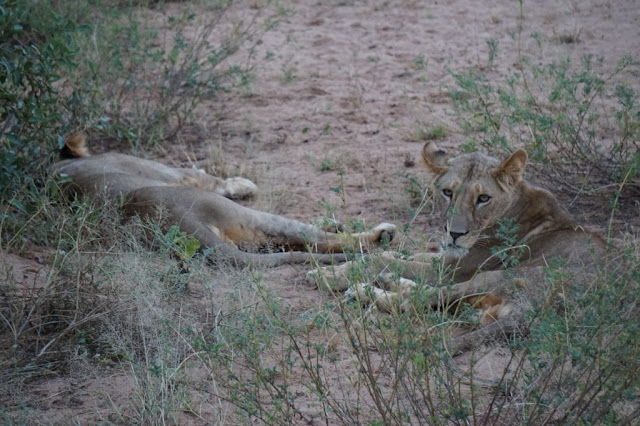ELEPHANT DUSTING
At Samburu National Reserve in northern Kenya, elephants are often seen giving themselves a dust shower. Using their trunks, they inhale the dust and blow it out forcefully. It’s quite an amazing thing to see. The dust serves as a sunscreen, keeps the animal cool and insects at bay.
Wild pigs also roll themselves in dust to protect themselves for the same purpose.
Klipspringers Spotted
Klipspringers spotted recently at Koitogo hill in Samburu National Reserve proved to be exciting for our guests who had never seen this antelope before. My mission was to spot a leopard but the klipspringers proved to be equally interesting.
Klipspringers are small antelopes that live in rocky places. They are well-adapted to their environment. Their fur has hollow shafts that act as shock absorbers should they slip off the rocks and their hooves are pointed like a ballerina’s to hop on the rocks. They pair for life like the smaller dik dik.
Lions
This week we had a great sighting of Lguret, one of the oldest males in Samburu and Buffalo Springs national reserves with his cubs. Male lions will babysit the cubs while the lionesses are our hunting.
Young males will usually kill any cubs they find in a pride when they become the dominant male. They want to pass their genes on and mark their territory.
Wild dogs
An endangered species, Africa wild dogs are seen in the reserve during the dry months of July and August when water is available inside. The picture was taken a few meters from the camp.
When soaring, this magnificent bird can spot a carcass nearly 10 kilometers away! Known to be the world’s highest flying bird, in 1973 one collided with an airplane off the Ivory Coast. The plane was flying at a height of 37,000 feet, which is higher than Mount Kilimanjaro at 19,340 feet high!
 |
| Image Source Mother Nature Network |
Long Crested Eagle
Dairy of a Naturalist by Jelly Loloju, driver guide at Samburu Intrepids Camp











No comments:
Post a Comment